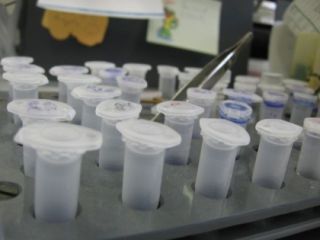Previous and current research
|
We are intrigued by the fascinating biochemistry and genetics of the serpins (serine protease inhibitors), a family of
proteins with unusual structural and functional diversity. Members of the serpin family cover a remarkably broad
spectrum of functions such as protease inhibition, assistance in protein folding, and chromatin condensation,
often involving large-scale conformational changes of the molecule fold. We have identified and characterised serpins that are potent inhibitors of proprotein convertases (PCs), a class of processing enzymes responsible for maturation of hormones, neuropeptides and other cellular proteins. PCs are also involved in far-spread pathologies such as cancer, arteriosclerosis and dementia. In addition, these enzymes are associated with the propagation of many pathogens like HIV, Bacillus anthracis or Ebola virus. A special interest of our research relates to serpins from Drosophila melanogaster, a small animal that has often proven to be a front runner for solving important biological questions. |
Current projects
|
Serpins: Security guards of the secretory pathway in eukaryotic cells The secretory pathway represents the major export/import highway for proteins. We are investigating the role of serpins as antiproteolytic security guards along the cellular export/import routes. |
|
|
Evolution of eukaryotic serpin genes In contrast to most other eukaryotic protein families, where the exon/intron pattern of their genes has been maintained for hundreds of millions of years, serpin genes display highly divergent gene architectures. We use changes of the exon-intron patterns and other rare genomic characters to resolve the family history of eukaryotic serpins and to study the evolution of serpin genes. |
|
|
Functional diversification of serpin genes By mutual exclusive exon splicing, transcription of serpin genes in insects and other animal taxons may generate multiple protease inhibitors from a single gene, able to inhibit a broad spectrum of proteases with different substrate specificity and cleavage biochemistry. Our goal is to unravel the molecular basis enabling generation of these multitasking serpins. |
Last update: 11/2010
Contact
Contact

